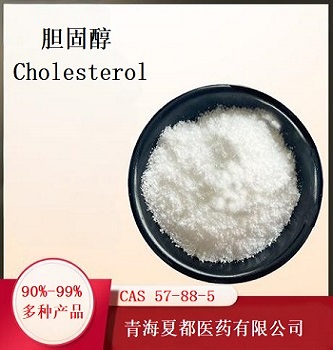Cholesterol(Click here to enter the details page to check the purity)
Consult
Buy Now
- Purity category 90% 92.5% 95% 96% 97% 98% 99%
- English name Cholesterol
- CAS 57-88-5
- Share
1. Basic Information & Chemical Properties
- Chemical Name: Cholesterol (also known as Cholesterin)
- CAS Number: 57-88-5
- Molecular Formula: C₂₇H₄₆O
- Molecular Weight: 386.65
- Physical Properties:
- Appearance: White or pale yellow crystalline powder, odorless with a bitter taste.
- Stability: Stable at room temperature.
- Solubility:
- Insoluble in water;
- Freely soluble in organic solvents (e.g., ethanol, diethyl ether, chloroform).
2. Physiological Roles & Functions
- Cell Membrane Structure:
- Essential component of cell membranes (>20% content), maintains membrane fluidity and structural integrity.
- Hormone Synthesis:
- Precursor for steroid hormones (e.g., cortisol, sex hormones) and vitamin D synthesis.
- Bile Acid Production:
- Precursor of bile acids, facilitates fat digestion and absorption.
- Lipid Metabolism Regulation:
- HDL-C (High-Density Lipoprotein Cholesterol): Removes cholesterol from blood vessels, reducing atherosclerosis risk.
- LDL-C (Low-Density Lipoprotein Cholesterol): Excessive levels lead to arterial plaque formation and cardiovascular diseases.
3. Applications
- Pharmaceutical Industry:
- Raw material for synthesizing hormones (e.g., adrenocortical hormones), vitamin D, and bile acids.
- Used as an emulsifier or stabilizer in lipid-based drug carriers (e.g., liposomes, emulsions).
- Excipient in pharmaceutical formulations.
- Food & Nutraceuticals:
- Functional foods fortified with phytosterols (e.g., β-sitosterol) to competitively inhibit intestinal cholesterol absorption.
4. Production & Supply
- Source: Extracted from animal tissues (e.g., brain, spinal cord, egg yolk).
- Key Manufacturer:
- Qinghai Xidu Pharmaceutical Co., Ltd.: Supplies pharmaceutical-grade cholesterol, intermediates, and derivatives.
